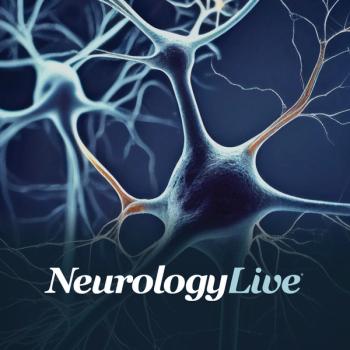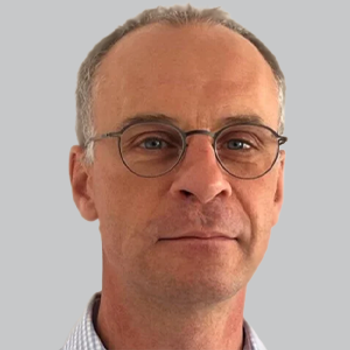
Understanding MOG-Antibody Associated Disease in Clinical Research: Eoin P. Flanagan, MB, BCh

The professor of neurology at Mayo Clinic talked about MOG-antibody associated disease, a relatively newly recognized demyelinating condition of the central nervous system. [WATCH TIME: 4 minutes]
WATCH TIME: 4 minutes
"In patients where you're very suspicious [of them having a diagnosis of MOG-antibody associated disease], you should consider testing [their] spinal fluid in addition to testing [their] blood."
In 2007, myelin oligodendrocyte glycoprotein antibody (MOG-IgG) became identified as a biomarker of central nervous system demyelinating disease.1 More than a decade later, in 2023, MOG-IgG-associated disease (MOGAD) was formally recognized as a separate disease, backed with international diagnostic criteria that differentiated it from multiple sclerosis (MS) and neuromyelitis optica spectrum disorder (NMOSD), other demyelinating autoimmune disorders.2 The condition is commonly associated with optic neuritis, acute disseminated encephalomyelitis, myelitis, cerebral monofocal or polyfocal deficits, brainstem or cerebellar deficits, cerebral cortical encephalitis, or combinations thereof.
In a newly published study in Annals of Neurology, findings revealed that cerebrospinal fluid (CSF) MOG-IgG testing had beneficial diagnostic utility in patients with a suspicious phenotype but negative serum MOG-IgG. This form of testing also revealed positive diagnostic utility in patients with low positive serum MOG-IgG results and diagnostic uncertainty. Conducted by senior author Eoin P. Flanagan, MB, BCh, professor of neurology and chief of the Division of Multiple Sclerosis and Autoimmune Neurology at
Flanagan, who also serves as the director of the Autoimmune Neurology Fellowship, recently sat down with NeurologyLive® in an interview to further discuss what distinguishes MOG-antibody associated disease from other demyelinating conditions such as MS and NMOSD. He also spoke about how testing for MOG-antibodies in both blood and spinal fluid may be more reliable for a diagnosis based on the findings from the recent study. In addition, Flanagan talked about the challenges associated with interpreting low positive levels of MOG-antibodies in patients.
REFERENCES
1. O'Connor KC, McLaughlin KA, De Jager PL, et al. Self-antigen tetramers discriminate between myelin autoantibodies to native or denatured protein. Nat Med. 2007;13(2):211-217. doi:10.1038/nm1488
2. Banwell B, Bennett JL, Marignier R, et al. Diagnosis of myelin oligodendrocyte glycoprotein antibody-associated disease: International MOGAD Panel proposed criteria. Lancet Neurol. 2023;22(3):268-282. doi:10.1016/S1474-4422(22)00431-8
3. Redenbaugh V, Fryer JP, Cacciaguerra L, et al. Diagnostic Utility of MOG Antibody Testing in Cerebrospinal Fluid. Ann Neurol. Published online April 9, 2024. doi:10.1002/ana.26931
Newsletter
Keep your finger on the pulse of neurology—subscribe to NeurologyLive for expert interviews, new data, and breakthrough treatment updates.


































